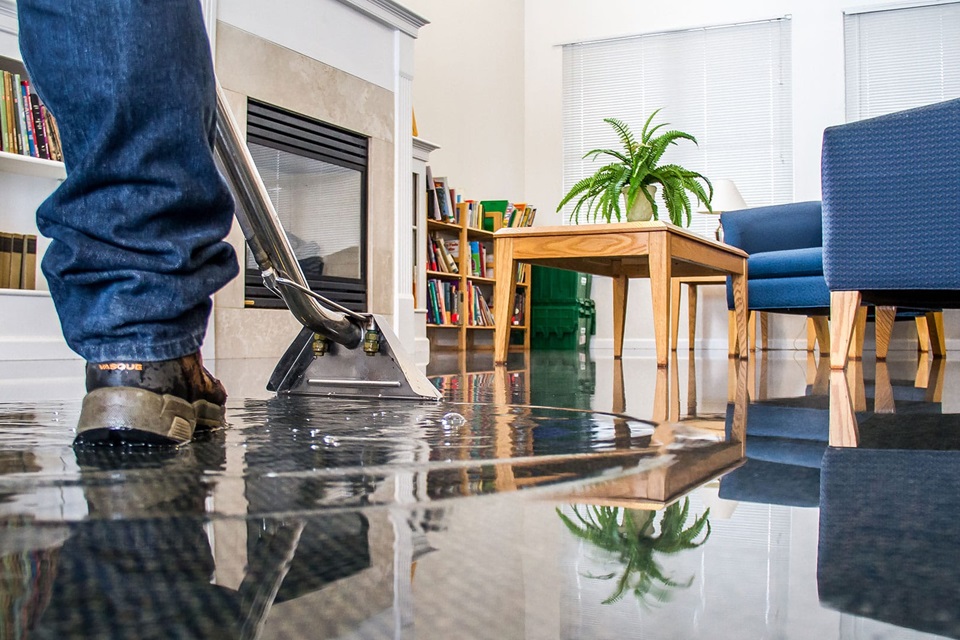Key Takeaways
- Quick action can significantly reduce the severity and cost of water damage.
- Professional assessment and restoration services leverage advanced technologies.
- Thorough documentation and understanding of insurance policies are essential for claims.
- DIY attempts may lead to increased risk and less effective restoration.
Discovering water damage in one’s home is a distressing experience, but knowing how to respond can prevent the situation from worsening. Engaging a professional service for water damage restoration saves time and ensures a thorough job, mitigating the long-term impacts of the damage. This article underscores the significance of rapid restoration, the steps involved in restoring a home to its previous state, and how to approach the restoration process intelligently and effectively.
Recognizing The Signs Of Water Damage In Your Home
Detecting water damage early can be the difference between minor repairs and a large-scale restoration. Homeowners must be vigilant, paying heed to unusual damp spots, swelling in wall panels or cabinetry, and the appearance of water stains on ceilings or walls. Actively searching for these signs post-natural calamity or plumbing incidents can prevent the escalation of damage, saving homeowners valuable time and resources.
Such vigilance is crucial in damp-prone areas like basements or attics. The growth of mold and mildew, which are not always visible, can release spores into the air, causing health issues. Subtle yet persistent changes in air quality or an unexpected spike in water bills can also indicate that water damage lurks out of sight.
The Risks Of Delaying Water Damage Repairs
Postponing the repair of water damage can lead to dire consequences. Over time, persistent moisture creates an ideal environment for biological hazards like mold, which can extensively contaminate air quality and pose health risks. The longer the water sits, the more it weakens structural components, including floors and walls, jeopardizing the safety of inhabitants. Financially, delaying restoration amplifies costs as the damage becomes increasingly more complex.
Further compounding these risks, water damage often grows exponentially if left unchecked. The relationship between the time water damage is left untreated and the total cost of remediation is particularly alarming, with studies showing that waiting can result in expenses soaring.
Water Damage Assessment: What Professionals Look For
Trained water damage restoration Puyallup professionals approach a water-damaged property with a strategic plan to assess every inch for issues. They conduct a meticulous evaluation, seeking out the source of moisture and its far-reaching impacts on the property. They probe beyond surface-level damage, identifying water that has seeped into subfloors, behind walls, or into insulation, establishing a comprehensive restoration roadmap.
To assist in this process, they often utilize advanced imaging tools to see moisture that is not visible to the naked eye. This precise assessment ensures that the subsequent restoration efforts are extensive and that no residual dampness remains to cause future problems. Adherence to this step-by-step process is vital for a property’s long-term stability and the health of its occupants.
Effective Water Extraction Techniques
Water extraction is a pivotal part of restoring a property. Professionals swiftly deploy specialized equipment to remove water. They consider several factors when selecting their techniques, prioritizing the speed and extent of water penetration. In scenarios with deep saturation, submersible pumps and heavy-duty extractors are brought in to handle the volumes and complexities of the situation.
It’s not just about removing visible water; it’s also about addressing high humidity levels within the structure. This is where precision and expertise come into play, as a balance must be maintained to prevent secondary damage from aggressive extraction methods or inadequate moisture removal.
Drying & Dehumidifying: Restoring Balance To Your Environment
Extracting water is only part of the equation; the subsequent drying process is equally significant. Restorers employ industrial air movers to circulate air across water-logged surfaces while running dehumidifiers to draw moisture out of the air. This two-pronged approach accelerates drying time and mitigates the chance of mold proliferation.
To ensure the efficacy of the drying process, measurements of humidity levels and moisture content in walls and flooring are taken regularly. Only once these readings confirm that all materials have returned to acceptable levels of dryness can the area be considered cleared for the next phase of restoration.
Restoration & Reconstruction: Rebuilding After Water Damage
Depending on the degree of damage, restorative work may range from minor repairs, such as patching drywall and repainting, to significant reconstruction of entire home sections. In severe damage, restoration can involve structural repairs or rebuilding efforts that revive an area to its pre-damage state or better.
The reconstruction phase is a delicate balance of restoring functionality while maintaining the original charm and design of the property. This can be particularly challenging with older or architecturally unique homes. Professionals exercise a deft touch, ensuring that the repaired sections are consistent with the home’s overall aesthetic, valuing the original craftsmanship.
Choosing A Reliable Water Damage Restoration Service
The restoration service you choose can significantly affect the outcome of water damage restoration. Beyond the necessary technical skills and equipment, look for a service with a sound reputation and verifiable customer satisfaction. Accredited and certified restoration services offer peace of mind, indicating that they adhere to industry-standard practices and ethics.
Communication is another essential factor; a good service provider will keep you informed every step of the way, explaining procedures and answering questions. This transparency builds trust and grants homeowners confidence that their property is in capable hands.
DIY Vs. Professional Water Damage Restoration: Weighing The Pros & Cons
There’s a temptation to handle water damage restoration independently, particularly for the hands-on homeowner, but the risks involved are considerable. Lacking the advanced equipment and technical knowledge of professionals can lead to incomplete drying or undetected mold growth, causing further harm. The safety of doing it yourself is also a concern — water damage can harbor electrical hazards or structural weaknesses that pose risks to the untrained individual.
By contrast, engaging with a professional service ensures efficiency, thoroughness, and safety. Restoration experts utilize the latest drying technology and moisture detection. They are equipped to handle the myriad challenges water damage presents, from initial assessment to the final touches of reconstruction. The augmented costs and risks associated with DIY efforts often do not justify the potential savings, making professional services the prudent choice for most homeowners.
In conclusion, facing water damage requires a decisive and knowledgeable response. This guide aims to give homeowners the understanding necessary to take immediate action, choose the appropriate service provider, and effectively navigate the aftermath of water-related incidents. When restoration is approached in a timely and informed manner, the difficulties of water damage can be significantly mitigated, preserving both the home and the well-being of its inhabitants.







No Comments